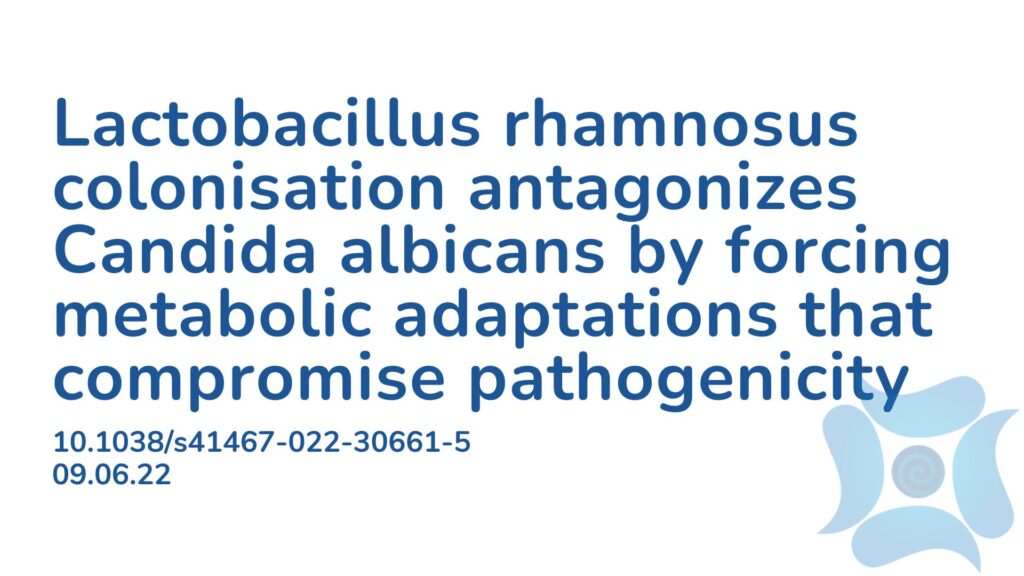Summary: Candida albicans is a common commensal yeast of the intestinal microbiome, however it can shift from a beneficial to pathogenic organism due to a compromised immune system, predisposing conditions or dysbiosis. Candida albicans can also translocate through the intestinal epithelium into the bloodstream which is associated with other medical conditions such as candidiasis and higher mortality rates. The Lactobacillus species, taken as oral probiotics, has been studied and discussed in previous literature to prevent candidemia in newborns, and has also been explored as a potential therapy against vaginal candidiasis, however its relationship with Candida albicans has never been studied in depth.This paper aimed to investigate the relationship between Candida albicans, Lactobacillus rhamnosus, and intestinal epithelial cells, by applying the understanding of genetics, as well as transcriptional and metabolic profiling. The results indicate that intestinal colonization with bacteria such as Lactobacillus rhamnosus can antagonize Candida albicans by forcing metabolic modulations that reduce fungal pathogenicity. This paper also mentions other factors that contribute to pathogenic Candida albicans growth such as glucose, fructose and mannose. However, these metabolites showed to deplete upon Lactobacillus rhamnosus colonization. This paper shows a very detailed insight into how genetic and metabolic profiling can provide fundamental information as to how the pathogenicity of Candida albicans can be controlled or prevented.
Abstract:
Intestinal microbiota dysbiosis can initiate overgrowth of commensal Candida species – a major predisposing factor for disseminated candidiasis. Commensal bacteria such as Lactobacillus rhamnosus can antagonize Candida albicans pathogenicity. Here, we investigate the interplay between C. albicans, L. rhamnosus, and intestinal epithelial cells by integrating transcriptional and metabolic profiling, and reverse genetics. Untargeted metabolomics and in silico modelling indicate that intestinal epithelial cells foster bacterial growth metabolically, leading to bacterial production of antivirulence compounds. In addition, bacterial growth modifies the metabolic environment, including removal of C. albicans’ favoured nutrient sources. This is accompanied by transcriptional and metabolic changes in C. albicans, including altered expression of virulence-related genes. Our results indicate that intestinal colonization with bacteria can antagonize C. albicans by reshaping the metabolic environment, forcing metabolic adaptations that reduce fungal pathogenicity.
Article Publication Date: 09.06.22
DOI: 10.1038/s41467-022-30661-5




